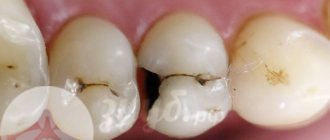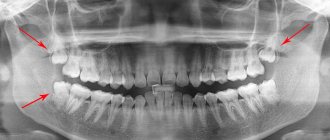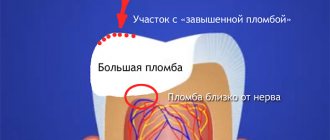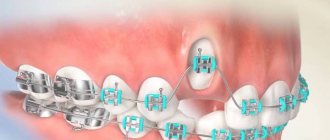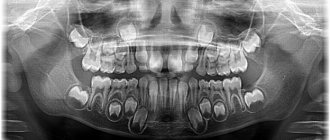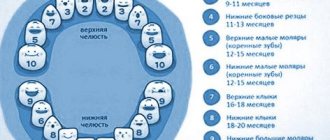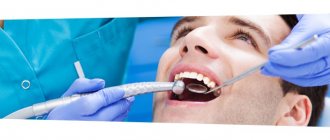What you will learn in this article:
- What is this anyway? Root caries, definition.
- Its prevalence and relevance of this problem. Epidemiology of root caries.
- What is it like? Classification of root caries.
- What causes this problem? The mechanism of development of tooth root caries.
- How to find this disease in a patient? Diagnosis of root caries.
- What will we see in the mouth? Clinical manifestations of root caries.
- How is this treated? Tooth root caries treatment.
Ready? Then let's get started!
Epidemiology of root caries
The incidence of root caries is constantly increasing in older people. This is due to the fact that:
- There are more people with periodontal diseases, since their prevention is ineffective
- Dental care has improved, and retirees now have many more teeth in their mouths.
- Well, life expectancy has increased, where would we be without it?
Be that as it may, in our country today people suffer from root caries
- 1.3% aged 25-29 years
- and 35.2% (aged 55-64 years)
Children and pregnant women: features of their treatment
Methods of dealing with dental problems in a child depend on his age. When looking for an answer to the question of how caries of baby teeth is treated, you need to take into account the degree of neglect of the disease. Delivering a lot of unpleasant experiences to a small patient, it affects the growth and development of permanent (molar) teeth. To prevent them from being damaged during teething, you should not turn a blind eye to the existing carious cavities in your child’s mouth. How to treat bottle caries is decided directly by the dentist himself, in consultation with the baby’s parents.
Many expectant mothers are concerned about the question of whether caries can be treated during pregnancy. The likely consequences and negative effects of painkillers on the developing fetus frighten most pregnant women. Exposure to an even greater risk of developing this disease, young mothers should treat their health with increased attention. Beginning damage to tooth enamel should be stopped immediately to prevent possible complications in the form of pulpitis or the development of a cyst.
Classification of root caries
In the International Classification of Diseases (ICD-10), root caries is located in section K02 dental caries. This is the classification:
K02 Dental caries
- K02.0 Enamel caries
- K02.1 Dentin caries – here too
- K02.2 Cement caries - here it is
- K02.3 Suspended dental caries – here too
- K02.4 Odontoclasia
- K02.8 Other specified dental caries
- K02.9 Dental caries, unspecified
Classification of root caries according to Leus
Leus P.A. , Borisenko L.G.
According to the depth of damage to root tissue:
- No cavity formation
- With the formation of a cavity
According to the course of root caries:
- Active lesion
- Suspended caries
- Secondary caries (active or inactive)
- Unspecified
Prevention of caries complications
Having encountered such a problem at least once, most likely, you will no longer want to exhaust your body with toothache and shell out decent sums for complex treatment. Therefore, you should not neglect preventive measures: visit the dentist once every six months and carry out hygienic cleaning. If, nevertheless, a hole has formed in the tooth and it becomes ill, you should choose a doctor with extreme caution. Remember that the result of poor treatment will be a more serious complication of caries, which may require surgery, and, worse, tooth extraction. In addition, complicated caries requires more expensive treatment than its initial formations.
Agree, you never thought that such harmless caries can cause serious consequences, including tooth extraction. Now think about what is cheaper, faster and more painless - going to the dentist for an appointment twice a year or postponing this moment for several years, then heading straight to the dentist’s office? It’s up to you to decide, of course, but life is given to enjoy joyful moments, and not to endure toothache. And dentists are ready to help us with this!
The mechanism of development of tooth root caries
Here we will explain the risk factors leading to root caries. They are divided into 2 groups:
- Factors that influence periodontal disease are:
- Insufficient prevention, incl. hygiene, both personal and professional
- Periodontal disease itself, and associated gum recession (exposure of the root)
- Elderly age
- Anatomical features of the patient’s mouth (small vestibule, short frenulum, bite pathology)
AS A RESULT – disruption of gum attachment and exposure of the root
- Once the root is exposed, the factors that cause caries come into play.
- Poor nutrition (carbohydrates)
- Fluoride deficiency (in food and toothpaste)
- Insufficient quantity or composition of saliva
AS A RESULT – the development of caries on the root surface.
One more question remains: why does caries develop faster on the root than on the crown of the tooth?
Answer: Because root cement is more sensitive to acids than highly mineralized enamel. For comparison: enamel dissolution begins at a pH less than 5.5. And cement - at 6.2 - 6.7. There is a difference?
Methods of treating the disease
If the doctor was able to determine why a person has dental caries, he will be able to develop therapeutic tactics and help him recover quickly. In the early stages, the problem can be eliminated non-invasively, that is, without the use of a drill. If the lesions are deep, drilling and medical treatment cannot be avoided.
Traditional methods will not help in the fight against the disease. But home recipes show an excellent effect as part of complex therapy to consolidate the results and prevent relapses.
Conservative treatment without preparation
At the initial stage of infection, the dentist will not drill crowns. The doctor will carefully remove plaque and tartar, and then apply a special composition to mineralize the enamel. The procedure lasts about an hour. Procedure:
- visual inspection;
- gum isolation;
- removal of deposits;
- application of remineralizing solutions.
If all manipulations were carried out according to the rules, the pathological process will stop. No additional methods are required.
Treatment with preparation of hard tooth tissues
Severely affected dental units can only be cured by mechanical removal of the diseased areas. The stages of intervention depend on the stage of the disease, usually as follows:
- use of anesthesia or other pain relief option;
- drilling;
- application of medications (antibacterial, etc.);
- installation of a protective gasket;
- restoring the integrity of the crown (filling);
- correction of the shape of the filling;
- grinding and polishing.
With deep lesions, the risk of pulp involvement increases. It is better to take a targeted photograph of the dental unit and make sure that there is no or no inflammation.
In severe cases, depulpation (extraction of the nerve and cleaning of the canals) and extraction (tooth removal) are indicated. These are extreme measures that are resorted to at the very last moment.
Diagnosis of root caries
Root caries is diagnosed like other diseases using basic and additional research methods:
- The main ones are questioning, inspection, probing, percussion, palpation. With their help, you can see the carious cavity on the root surface, determine its topography (on which root surface it is located), depth, edges, etc.
- Additional:
- This is an index assessment of hygiene (OHI-S, PLI), gum condition (GI, gum recession index), periodontal condition (CPI)
- Also, diagnostic tests: (saliva pH test).
- X-ray examination (bite-wing radiography, orthopantomogram)
Using X-rays, you can find hidden carious cavities under the gum, or adjacent to an adjacent tooth.
How can deep caries be cured?
A disease such as deep caries can be treated in one or two visits.
The first option is carried out according to this scheme:
- The doctor numbs the affected tooth with a local anesthetic.
- Opens the carious cavity and, using a drill, cleans it of dead and diseased tissue until dense walls and bottom remain.
- If caries is complicated by pulpitis, endodontic treatment is carried out, that is, the dental canals are filled.
- To treat inflammation, isolate the sensitive pulp from the effects of filling material, and build up dentin, a therapeutic or insulating pad is placed at the bottom of the cavity.
- After all the above manipulations, the tooth is closed with a filling.
Treatment in two visits is carried out according to this scheme.
During the first visit, pain relief is performed, the cavity is opened and the affected tissue is removed. A medical pad is placed in the cavity and closed with a temporary filling. On the second visit after a few days or weeks, if the patient has no complaints, the temporary filling is replaced with a permanent one.
Treatment in two visits is considered preferable because it is possible to observe the condition of the tooth before installing a permanent filling. If pain, discomfort and other symptoms occur, additional therapeutic procedures can be performed to ensure that the affected tissue is completely removed. When treating a tooth in two visits, complications and relapses of caries occur much less frequently.
Clinical manifestations of root caries.
The first is complaints. The patient most often complains of:
- An aesthetic defect (not beautiful) if there is caries on the vestibular surface of the front teeth.
- Discomfort while eating, pain when brushing teeth
- Symptoms of periodontal disease (bleeding gums, loose teeth, etc.)
- Short-term pain from irritants (teeth hurt from ice cream, hot tea). The pain disappears when the cause is removed.
Next, we look into the oral cavity and see the clinical picture. We will consider it taking into account the Leus classification
Along the way, root caries occurs:
- Active lesion - the edges of the cavity are undermined. The cavity is filled with softened tissues. There is a tendency towards a rapid increase in its size.
- Suspended caries - the edges of the cavity are smooth, dense, flat (not undermined). The bottom of the cavity is dense and shiny. Don't strive to get bigger.
- Secondary caries is the resumption of the process in the area of remission or after treatment (at the site of the filling).
According to the depth of the lesion:
- Without cavity formation - a white spot. Density is less than normal cement.
- With the formation of a cavity - any of those described in paragraph 1. carious defects.
Depending on what surface of the tooth it affects
Caries can affect any surface of the root, or 2 surfaces, or all surfaces in a circle (circular spread)
And lastly, according to ICD-10. There are cement caries and dentin caries.
- Cementum caries affects only the cementum of the tooth root
- Dentin caries also spreads deeper into dentin
The classification is over, and so are the clinical manifestations.
To summarize, root caries is a spot or cavity on the surface of the root of a tooth. Its edges are undermined or have smooth edges.
The cavity may be located above or below the gum.
Areas affected by caries and stages of the disease
Caries is a dental disease in which, under the influence of microorganisms and other factors, the structure of dental tissues is destroyed.
The mechanism of development of the disease is due to the vital activity of bacteria Streptococcus mutans and some other species. They have a cariogenic effect and create conditions for the development of the carious process. It goes like this. Bacteria accumulate on teeth and form a biological film called plaque. When we eat foods rich in carbohydrates, plaque bacteria actively process the sugars they contain and produce organic acids that are dangerous to our teeth. They destroy the enamel structure, deprive it of minerals, and penetrate deep into the tooth. The more acids produced by oral microorganisms, the more active and rapid the destruction of dental tissue.
Damage to teeth by caries does not occur instantly; it can take several months from a small spot to the appearance of a hole in the tooth. Based on how deeply the carious process penetrates, several stages of the disease are distinguished.
- The earliest is the spot stage.
A small focus of demineralization appears on the surface of the enamel. It looks like a whitish dot or streak. It is almost impossible to notice such changes with the naked eye. And provided that there are no other symptoms (pain or discomfort) at this stage, a person often misses the onset of caries and does not see a doctor.
- Superficial caries.
If the stain was not noticed in time, it gradually grows, the enamel tissue is destroyed, and a cavity is formed in it - a small hole. As a rule, there is still no pain, although food may get into the cavity or tooth sensitivity may increase.
- Average caries.
The form of average caries is characterized by the penetration of the pathological process into dentin - the bone tissue under the enamel. At this stage, a carious cavity forms in the dentin, pain becomes severe, and the tooth reacts to temperature or taste stimuli. Most often, people go to the dentist with the listed symptoms.
- Deep caries.
If for some reason you do not treat average caries, the pathology progresses and approaches the pulp - the dental nerve. This is the most complex and dangerous form of caries, because there is a high risk of infection spreading to the pulp, periodontium and the development of complications.
Treatment of tooth root caries
Treatment of root caries, as well as simple caries, begins with motivation and prevention. Read more about this in our article at the link.
Further, treatment tactics depend on the depth of the carious lesion:
Caries in the spot stage is treated with conservative retherapy. Apply:
- Fluorine preparations – varnishes, gels, solutions (Fluorine in the form of sodium fluoride, amino fluoride, tin fluoride, etc.)
- Calcium preparations (10% Calcium gluconate).
- Antiseptics (Chlorhexidine 1-2%)
Applications of these drugs contribute to the remineralization of tooth tissue, stopping and reversing the development of caries in the stain stage. Root cement (due to its porosity) is easier to remineralize than other dental tissues.
- Desynthesizers – reduce tooth sensitivity.
Caries in the stage of hard tissue defect is treated with preparation and filling.
Next, we will describe the differences between each stage of treatment.
- Disclosure. In case of root caries, the entrance to the carious cavity is wide, without overhanging edges. Therefore, no disclosure is made.
- Extension. Preventive expansion of the cavity (preparation of healthy dentin) is carried out only in case of rapidly progressing root caries.
- Necrectomy. Because the distance from the bottom of the cavity to the pulp is small, necrectomy is carried out carefully. Only softened dentin is removed.
- Formation of a carious cavity. The cavity is oval in shape. If it is located on the proximal surface, an additional platform is created on the oral one. If the cavity is located in the enamel area, create a bevel 2-5 mm wide.
- Filling. Due to the high humidity near the gum (gingival fluid), a filling material is chosen that is not afraid of moisture. This is GIC, amalgam or compomer.
And in conclusion, we summarize the main elements of the article:
- Root caries is a cavity in the root of a tooth.
- Prevalence 35.2% in the age group 55-64 years
- WHO classification – cement caries. And clinical classification of prof. Devina
- 2-stage development mechanism: root exposure + cariogenic factors
- Diagnostics - like standard caries + periodontal examination.
- Clinic: Spot caries and Cavity caries. Rapidly progressive with undermined edges and remission with a smooth surface
- Treatment: Rem. Therapy – caries spots or preparation/filling – cavity caries.
That's all. Learn, develop, read other articles. Good luck!
Causes of dental disease
There are many reasons why tooth enamel is destroyed. The main thing is damage by microorganisms that develop in the human mouth. As a result of their activity, bacteria produce organic acids that dissolve hard tissues. Therefore, the main measure to prevent dental caries is careful oral hygiene.
Factors that cause the development of the disease also include the following:
- Excessive viscosity of saliva. If saliva is viscous, plaque from the tooth surface, where bacteria develop, is not naturally removed. Therefore, it must be removed during professional cleaning by the dentist.
- Crowded bite, in which it is important to thoroughly clean the space between the teeth.
- Poor or complete lack of oral hygiene.
- Stone formation, which also causes periodontal problems.
- Eating foods high in carbohydrates. Therefore, it is better to consume sweets in moderation.
- Exposure to harmful occupational factors. Carious lesions often develop in people working in hazardous industries.
- Injuries to the coronal part that cause the destruction process. The enamel is damaged, so it is more susceptible to negative effects.
Dental disease can be caused by a hereditary predisposition.
Most often, carious cavities develop on contact surfaces, in the blind pits of the incisors, in the cervical region, and on fissures. To prevent the development of the disease, various methods of caries prevention are used.
